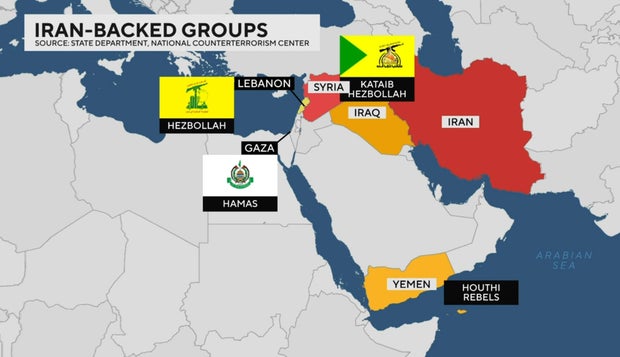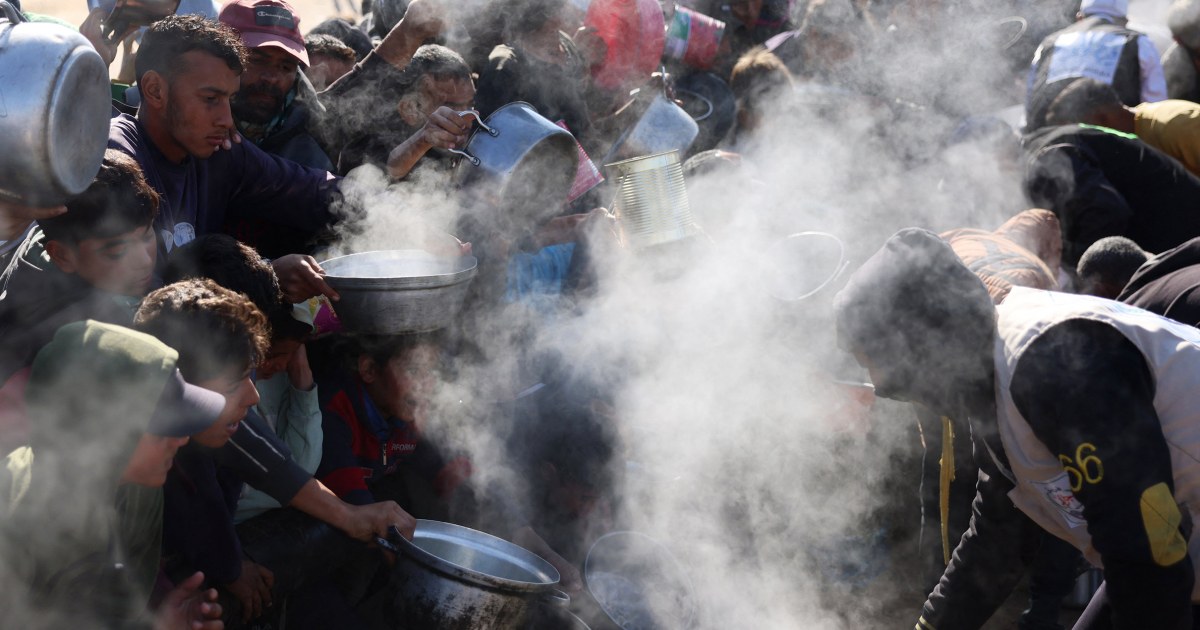World
Iran launches missile attack on Israel, but Israeli military says no casualties reported

Sirens blared across Israel and loud booms were heard late Tuesday after Iran launched a missile attack on the country. The Israeli military said its missile defense systems carried out “a large number of interceptions,” and a U.S. defense official said the United States intercepted some of the missiles to help defend Israel.
After about 45 minutes, the Israel Defense Forces said it was safe for people across Israel to leave shelters, and spokesman Rear Admiral Daniel Hagari said the military did not “identify any additional aerial threats from Iran.”
Hagari said that while a few of the Iranian weapons did land and assessments were ongoing, the IDF was “not aware of any casualties.”
American officials said nearly 200 missiles were fired towards Israeli territory from Iran, while the IDF said, “Since the beginning of the Iranian missile attack … IDF systems have identified approximately 180 missiles fired towards Israeli territory from Iran.”
Israeli Prime Minister Benjamin Netanyahu declared the attack a failure but vowed that “Iran will pay for it.”
“The regime of Iran does not understand our determination to defend ourselves,” Netanyahu said. He also thanked the U.S. “for its support of our defense effort.”
The Israeli leader, speaking on the eve Rosh Hashanah, the Jewish New Year, concluded his remarks by saying, “Israel is on the move, and the axis of evil is retreating. We will do everything necessary to continue this trend, to achieve all the goals of the war, primarily the return of all our abductees, and to ensure our existence and our future.”
U.S. National Security Adviser Jake Sullivan said Tuesday during a news conference from the White House that American Navy destroyers joined Israel “in firing interceptors to shoot down inbound missiles.”
In Tel Aviv, the missiles seemed to come in waves, each one starting with sirens blaring out, loud booms, and then silence until the next blaring of sirens began.
“The explosions you hear originate from interceptions or falls [of missiles]. The air defense system detects and intercepts threats all the time,” the Israeli military said.
An Israeli security official said most missiles were intercepted “in cooperation” with the U.S. Air Forces Central Command, but that “several hits were identified, and the damage is being assessed.”
JACK GUEZ/AFP/Getty
Sullivan said President Biden and Vice President Kamala Harris monitored the attack and the response from the White House Situation Room. He said the U.S. did not know of any deaths in Israel but that they were monitoring a report of a Palestinian civilian death in Jericho in the West Bank.
Secretary of State Antony Blinken said Monday that Iran’s attack was “totally unacceptable, and the entire world should condemn it.”
He said initial reports suggested “that Israel, with the active support of the United States and other partners, effectively defeated this attack.”
In a statement late Tuesday night, Defense Secretary Lloyd Austin said that “U.S. forces in the Middle East intercepted multiple missiles launched by Iran toward Israel,” calling it an “outrageous act of aggression by Iran.”
“We will never hesitate to protect our forces and interests in the Middle East, and to support the defense of Israel and our partners in the region,” Lloyd added.
In Jerusalem, retired trauma surgeon Bill Schecter, from San Francisco, said he got an alarm on his phone and went into the shelter in his apartment building.
“We heard multiple booms. I suspect it was the Iron Dome shooting down missiles,” Schechter said, referring to Israel’s defense systems. “There were two waves. One where we heard booms. Then it went silent and we came out. Then we heard another series of booms and had to return to the bomb shelter.”
Wisam Hashlamoun/Anadolu/Getty
Iran’s mission to the United Nations issued a statement that confirmed the attack on Israel and indicated that its direct assault was over.
“Iran’s legal, rational, and legitimate response to the terrorist acts of the Zionist regime — which involved targeting Iranian nationals and interests and infringing upon the national sovereignty of the Islamic Republic of Iran — has been duly carried out,” the Iranian statement said. Iran supports many proxy groups in the region, and it wasn’t clear whether any of those groups might still launch additional attacks on Israel after the Iranian missile salvo.
Iranian state television claimed victory after the attack, saying many missiles had made it through Israel’s defense systems and hit their targets, though there was little evidence to support that assertion.
While Iran’s missiles appeared to have claimed no lives, Israeli police said two gunmen opened fire on members of the public on a road in Tel Aviv not long before the rockets were fired. The Associated Press cited police as saying six people were killed in the attack before the two suspects were killed.
The explosions from the Iranian missile assault rang out just hours after a senior White House official told CBS News the U.S. had indications that Iran was preparing to launch a ballistic missile attack on Israel. Israeli officials said that warning was shared with them.
Iran last fired a salvo of ballistic missiles at Israel in April, in retaliation for an Israeli strike on the Iranian consulate in Syria’s capital, which killed a number of senior Iranian military commanders.
Iran launched more than 300 missiles and drones at Israel in that April attack, but Hagari said at the time that virtually all of the weapons were intercepted before entering Israeli territory, and he reported only minor damage to one military base from the few missiles that did land in the country. One 10-year-old girl was “severely injured by shrapnel” from an intercepted missile, but the IDF reported no additional casualties.
U.S. officials told CBS News earlier Tuesday that Iran had been ready to strike Israel again on short notice since early August, when Tehran threatened to retaliate for the assassination of Hamas leader Ismail Haniyeh in Tehran.
An Iranian diplomatic source told CBS News on Tuesday that the country’s leadership was “under heavy pressure to take action” against Israel amid the escalating attacks on its close ally Hezbollah, but they believed any Iranian strike on Israel would be limited in scope. Iran framed its missile attack on Israel as a response not to Israel’s operations against Hezbollah, but to its assassination of senior Iranian military figures earlier in the year.
The Iranian attack came a day after Israel announced the beginning of “limited, localized, and targeted ground raids” against the Iran-backed group Hezbollah in Lebanon.
President Biden has called repeatedly for a cease-fire amid weeks of escalating fire between Israel and Hezbollah over the southern Lebanon border. Officials at the White House, State Department and Pentagon have all made clear the risks of an all-out war between Israel and the well-armed Iranian proxy group in Lebanon, warning that it could spiral into a broad regional conflict.
CBS News
On Sept. 30, Pentagon Deputy Press Secretary Sabrina Singh told reporters that a number of American units already in the Middle East would have their deployments extended, and the forces due to replace them would instead overlap. That includes F-16, F-15E, A-10 and F-22 fighter aircraft and the personnel who operate the planes, she said, amounting to an increase of an “additional few thousand” U.S. troops in the region.
U.S. defense officials told CBS News Tuesday that there were more U.S. military capabilities in the region now, including 40,000 American troops, than there were when Iran launched its missile attack on Israel in April.
Iran backs a range of groups across the region, including Hezbollah, Hamas and the Houthi rebels in Yemen. Tehran refers to these groups as a “resistance front” against Israel’s decades-long occupation of Palestinian territory, while Israel refers to it as an axis of evil with the ideological goal of wiping the Jewish state off the map.
Hezbollah calls its rocket and drone attacks on Israel a legitimate support and defense of Palestinians in Gaza and the Israeli-occupied West Bank, and the Houthis have claimed the same rational for their months-long targeting of commercial and military vessels in the Red Sea.
One of the biggest risks for the U.S. is that Iran’s proxy groups — including smaller militias based in Iraq and Syria — will target American forces in the region in retaliation for Washington’s support of Israel. They have already done so since Oct. 7, firing rockets and drones at U.S. bases more than 165 times. Most of the attacks cause little to no damage, but a January drone assault on a U.S. outpost in Jordan, claimed by an Iran-backed group in Iraq, killed three U.S. troops and wounded dozens.
Before the Iranian missile attack, the IDF tightened domestic security precautions across much of the country on Tuesday. Among the new measures announced by the IDF’s Homefront Command were limits on the number of people permitted to gather in public across northern Israel, near the Lebanon border.
,
Charlie D’Agata and
contributed to this report.











